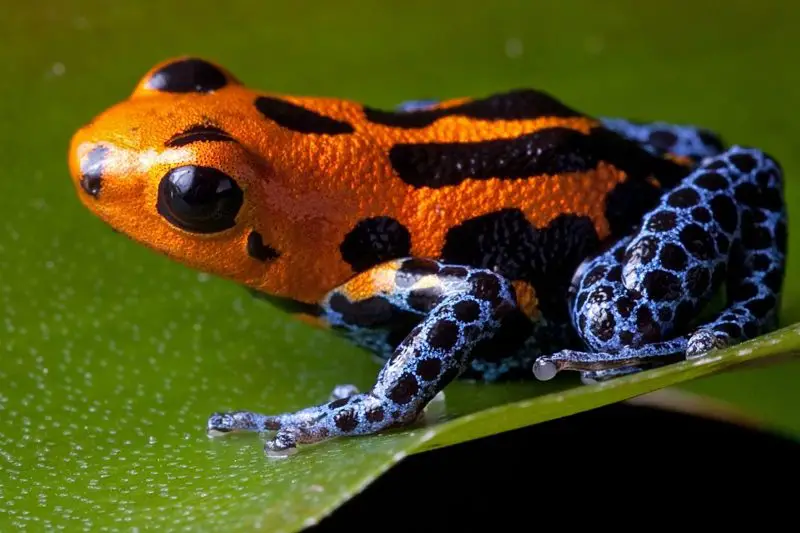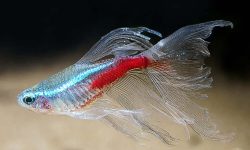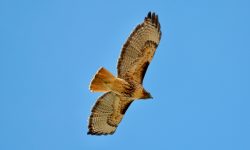The Amazon rainforest, a lush green mosaic of life, teems with extraordinary creatures that have evolved a stunning variety of survival strategies. Among the most captivating are the dart frogs—tiny, brightly colored amphibians that have developed an exceptional form of parental care. Unlike many amphibians that abandon their eggs soon after laying them, dart frogs engage in complex and devoted parenting. This unique behavior not only enhances the survival chances of their offspring but also reveals the intricate evolutionary dance between environment and biology.

Introduction to Dart Frogs
The Dazzling Diversity of Dart Frogs
Dart frogs belong to the family Dendrobatidae, comprising over 170 species primarily found in Central and South America. These small amphibians are celebrated for their striking colors—vibrant blues, reds, yellows, and greens—which serve as a warning to potential predators of their toxic skin secretions. Their coloration is not just for show; many species harbor alkaloid toxins acquired from their diet of ants, mites, and other arthropods.
Habitat and Lifestyle
Dart frogs are typically found in humid, tropical rainforests where leaf litter, bromeliads, and mosses provide the moist microhabitats they need. They are diurnal, relying on keen eyesight for foraging and mate selection. What sets them apart in the amphibian world, however, is their commitment to their young.
Why Parental Care Matters in the Rainforest
The Challenges of Amphibian Reproduction – A Closer Look
In the amphibian world, the dominant reproductive strategy is one of sheer numbers. Most frog species lay hundreds or even thousands of eggs in aquatic environments, providing no parental care and relying on statistical odds that a small fraction will survive to adulthood. While this strategy may suffice in less competitive ecosystems, it becomes increasingly ineffective in the biologically intense and predator-rich environment of the rainforest.
Rainforests like the Amazon harbor an extraordinary density and diversity of predators, including army ants, snakes, spiders, predatory fish, and even other amphibians. Unattended eggs and free-swimming tadpoles are exceptionally vulnerable to predation. Compounding this issue is the scarcity of reliable aquatic breeding sites. Puddles and temporary pools may dry up quickly, and the few permanent water bodies are often overcrowded and filled with threats.
Under such conditions, traditional reproductive strategies lead to high mortality rates, rendering the “quantity over quality” model ineffective. In response to this ecological pressure, dart frogs (family Dendrobatidae) have evolved a dramatically different reproductive approach—one characterized by intensive parental care. Rather than abandoning their offspring, these frogs actively protect and nurture them, dramatically increasing their chances of survival in a dangerous and competitive environment.
Evolutionary Advantages of Parental Investment – Deeper Analysis
Parental care in dart frogs represents a profound evolutionary shift with numerous biological benefits, especially under the selective pressures of the tropical rainforest. Though costly in terms of energy and time, this strategy has proven to be highly adaptive.
Minimizing Environmental Hazards: By guarding their eggs and transporting tadpoles to safer locations, dart frog parents reduce exposure to predators, desiccation, and starvation—the primary causes of mortality in early amphibian life stages. Some species, such as Oophaga pumilio, go even further: mothers feed their tadpoles with unfertilized eggs, providing essential nutrients until metamorphosis. This form of trophic provisioning is rare among amphibians and underscores the extreme level of parental investment in this group.
Accessing Microhabitats: Intensive care allows dart frogs to exploit microhabitats that are otherwise too small, isolated, or dangerous for unattended offspring. For example, rainwater trapped in bromeliad leaves, tree holes, or bamboo internodes becomes an ideal rearing site when tadpoles are manually deposited and monitored by a parent. These water-filled niches are typically free of large predators and provide a stable, moist environment, enhancing juvenile development.
Reducing Competition and Predation: By spreading out offspring across multiple isolated sites, dart frogs reduce intra-species competition and avoid concentrating all young in a single high-risk area. Each tadpole may occupy its own tiny pool, preventing resource depletion and limiting the spread of disease or parasites.
Evolutionary Trade-Offs and Success: While parental care results in fewer offspring per breeding event, it dramatically increases the survival rate per individual, which is a more effective strategy in environments where mortality is high. This reflects a broader evolutionary trade-off, shifting from an r-selected strategy (many offspring, little care) to a more K-selected model (fewer offspring, intensive care). In such ecosystems, quality outweighs quantity.
Moreover, in some dart frog species, the ability to provide care becomes a sexual selection factor, with potential mates choosing partners based on proven parenting capabilities. This feedback loop further reinforces the evolutionary success of parental care strategies.
The Reproductive Strategy of Dart Frogs
Courtship and Mating – A Sensory and Territorial Dance
The courtship rituals of dart frogs (Dendrobatidae) are intricate, multisensory events shaped by evolutionary pressure and the demands of life in dense rainforest environments. Unlike many amphibians that rely solely on acoustic signaling, dart frogs utilize a combination of visual cues, vocal communication, and tactile engagement to attract and select mates.
Male dart frogs are highly territorial, often defending small, resource-rich patches of forest floor or low vegetation. These territories are not just breeding grounds but also safe havens where suitable egg-laying sites—like moist leaves or moss-covered rocks—are abundant. Males advertise their presence and reproductive fitness through high-pitched trills or buzzing calls, often repeated for hours. Each species has a distinct vocalization, allowing females to identify appropriate mates even in acoustically crowded environments.
Once a female is drawn in by a male’s call, the interaction intensifies. The pair engages in prolonged courtship rituals that may include circling, gentle tapping or nudging, and body posturing. This tactile component is believed to strengthen pair recognition and synchronize reproductive readiness. These rituals can last several hours, during which the female assesses the male’s territory and fitness before finally consenting to mate.
This elaborate process reflects a strong element of mate choice, where females select partners not just for their acoustic appeal, but also for their territorial quality and potential as caregivers—an important factor given the species’ high levels of parental investment.
Egg Deposition in Safe Havens – Precision in Parenthood
Once courtship concludes, the female deposits a small clutch of fertilized eggs, typically ranging from 3 to 10, in a carefully chosen site. Unlike species that scatter eggs in open water, dart frogs lay theirs in moist, sheltered microhabitats—the underside of leaves, mossy crevices, or hidden nooks on the forest floor—often within the male’s territory.
These deposition sites are selected with precision to maximize humidity and minimize exposure to predators, parasites, and environmental extremes. The small clutch size is a strategic adaptation: with fewer eggs, each receives greater parental attention and care.
In a striking example of role reversal uncommon among amphibians, it is usually the male who assumes responsibility for the eggs post-laying. He remains nearby, guarding the clutch diligently, periodically moistening them with water collected on his skin or transported from nearby droplets. This hydration is crucial in preventing desiccation and suppressing fungal infections, both of which are common threats in tropical undergrowth.
Moreover, males actively defend the clutch from small predators such as ants and beetles. This behavior represents a profound shift from the typical amphibian pattern of parental abandonment, highlighting a unique evolutionary commitment to caregiving.
The involvement of males in this early parental phase reflects the broader evolutionary trajectory of dart frogs toward K-selected reproductive strategies, where success is measured not by the number of offspring produced, but by the survival and development of each one.
Tadpole Transport: A Father’s Devotion
Carrying Tadpoles to Water Sources – A Parental Odyssey
Among all amphibians, dart frogs exhibit one of the most remarkable examples of post-hatching parental care: the transport of newly hatched tadpoles. Once the fertilized eggs have undergone embryonic development and begin to hatch, the attending parent—usually the male, though sometimes the female in certain species—carefully lifts each tadpole onto his back, where they cling to the moist skin by surface tension and mucus.
This behavior is not only iconic but also highly strategic. Rather than leaving vulnerable hatchlings to wriggle toward water—a path often filled with predators and hazards—the parent undertakes the journey manually and individually, transporting each tadpole to a separate aquatic nursery. This level of care significantly reduces early-stage mortality, a critical advantage in an environment where even a few moments of exposure can mean death.
The journey itself is arduous and may take several hours or even days, depending on the species and the availability of suitable nurseries. In some species, males climb many meters up into the rainforest canopy, navigating slippery foliage, vertical trunks, and unpredictable weather to reach water-holding structures hidden in plants. During these treks, the parent often carries only one tadpole at a time, repeating the process for every hatchling in the clutch. This investment of time and energy highlights the extraordinary evolutionary commitment dart frogs have made to ensure the survival of their young.
Choosing the Right Nursery – Precision in Habitat Selection
Once a tadpole is safely transported, the parent faces another critical decision: where to place it. Nursery site selection is far from random. Dart frog parents—especially males—are highly discerning and often scout multiple sites before making a final choice. The success of the offspring depends heavily on this decision, as the chosen environment must strike a delicate balance between safety, hydration, and food availability.
Ideal nurseries are small, ephemeral water bodies that are largely isolated from larger predators. These include phytotelmata, or plant-held water reservoirs, such as water-filled bromeliad tanks, bamboo internodes, tree holes, and even curled leaves. These microhabitats are often nutrient-poor and offer little food, but their low predator density and stable moisture make them suitable for development—especially when combined with parental provisioning.
In the case of Oophaga pumilio, the strawberry poison dart frog, females play an active role in feeding tadpoles by returning periodically to deposit unfertilized eggs, which serve as their sole source of nutrition. This behavior is both rare and extraordinary in amphibians, effectively transforming a nutrient-poor nursery into a private, safe rearing chamber fueled by maternal investment.
Other species may rely on sites rich in natural detritus or insect larvae to provide food, carefully judging the biochemical and ecological quality of each water pocket. Factors such as pH, temperature, depth, and competition are all likely taken into account—though the precise decision-making processes remain a fascinating area of ongoing research.
This careful selection process exemplifies the fine-tuned parental strategies that dart frogs have evolved to maximize reproductive success in challenging environments. It also underscores the incredible ecological intelligence of these small amphibians, whose survival depends as much on behavior as on biology.
Specialized Feeding: The Role of the Mother
Egg-Feeding in Certain Species
In several species, most notably Oophaga pumilio and Ranitomeya imitator, mothers play an essential role post-transport by feeding their tadpoles with unfertilized eggs. These eggs are rich in nutrients and delivered directly into the water where each tadpole lives. The mother returns regularly, sometimes every few days, to provide fresh food.
Ensuring Tadpole Development
This egg-feeding behavior is critical for tadpoles living in small water bodies that lack sufficient food. Without maternal input, the tadpoles would fail to grow and eventually die. It is a striking example of matrotrophy, where mothers nourish offspring beyond the egg stage—a trait far more common in mammals than amphibians.
Species Variations in Parental Care
Ranitomeya imitator: A Model of Monogamy and Cooperation
Ranitomeya imitator is particularly fascinating because of its monogamous social structure and biparental care. Males transport the tadpoles, while females provide egg meals. This cooperation enhances offspring survival and has been studied extensively as an example of evolutionary convergence between amphibians and mammals.
Allobates femoralis: Paternal Excellence
In species like Allobates femoralis, males guard and moisten the eggs, then carry the hatched tadpoles to temporary pools. These frogs do not feed their tadpoles but choose nutrient-rich nurseries. Studies have shown that males can remember the locations of multiple deposition sites—evidence of spatial memory and cognitive ability rarely associated with amphibians.
Hormonal and Neurological Mechanisms Behind Parenting
The Neurobiology of Caregiving
Parental care in dart frogs is supported by hormonal systems similar to those in birds and mammals. Hormones such as arginine vasotocin and prolactin are involved in stimulating and sustaining caregiving behavior. Research using brain imaging and hormone assays has identified neural circuits activated during parenting episodes.
Adaptive Brain Functions
Some dart frogs exhibit neuroplasticity—changes in brain function related to caregiving. These changes suggest that parental care isn’t merely instinctual but involves learning and memory, allowing frogs to adapt their strategies based on environmental cues and past experiences.
Ecological Impacts of Dart Frog Parenting
Role in Rainforest Dynamics
By selecting specific microhabitats and carefully transporting their young, dart frogs influence the distribution of small aquatic ecosystems within the rainforest. Their activity affects plant-animal interactions, nutrient cycles, and even the survival of other small invertebrates that share their tadpole nurseries.
Indicator Species for Environmental Health
Dart frogs are sensitive to pollution, deforestation, and climate change. Because their reproductive success depends on intact microhabitats, their presence and behavior serve as a barometer for the overall health of rainforest ecosystems. Conservation efforts often prioritize dart frogs due to their ecological significance and aesthetic appeal.
Conservation Concerns and the Future of Parental Behaviors
Threats to Dart Frogs
Despite their evolutionary success, dart frogs face numerous threats: habitat destruction, the illegal pet trade, and the chytrid fungus (Batrachochytrium dendrobatidis), which decimates amphibian populations worldwide. These challenges jeopardize not only individual species but the diverse parental behaviors they represent.
Preserving Complex Behaviors
Conservation biologists emphasize the importance of protecting not just the frogs themselves, but also the behavioral diversity they embody. The intricate systems of caregiving, site selection, and nourishment represent millions of years of evolution and provide insights into the adaptability of life in challenging environments.
Captive Breeding and Behavioral Research
Zoos and research centers worldwide now engage in captive breeding programs aimed at preserving dart frog species. These programs focus on maintaining natural behaviors, especially parental care, which can be lost in captivity without proper environmental stimulation.
What Dart Frogs Teach Us About Parenting
A Model for Studying Evolutionary Psychology
Dart frogs offer a unique model for studying the evolution of parenting. Their behaviors parallel those of birds and mammals, suggesting that certain caregiving strategies have evolved independently in different animal groups under similar environmental pressures.
Inspiration from the Rainforest
In a world where parental care is often taken for granted, dart frogs remind us of the remarkable lengths to which nature goes to protect the next generation. Their behavior is a testament to the power of adaptation, cooperation, and sacrifice—qualities that transcend species and habitats.
Conclusion
The story of dart frog parental care is one of nature’s most vivid illustrations of love, intelligence, and evolutionary ingenuity. From the rainforest floor to the canopy, these tiny amphibians carry a profound lesson: survival is not only a matter of strength or numbers but also of care, strategy, and connection. As we strive to protect the ecosystems they inhabit, we also safeguard a compelling chapter in the natural history of parental devotion.






